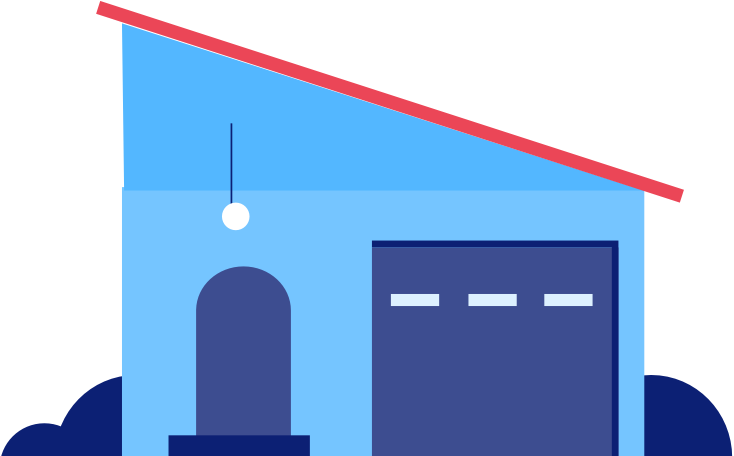
So, you’re thinking of buying your first home. That’s exciting. As you begin your house hunting adventure, do your homework and figure out how much you can comfortably afford.
Let’s look at three key factors before you start shopping: your monthly mortgage payment, closing costs and ongoing expenses.
Figure out how much mortgage you can afford.
As a general rule, lenders want your mortgage payment to be less than 28% of your current gross income. They’ll also look at your assets and debts, your credit score and your employment history. From all of this, they’ll determine how much they’re willing to lend to you.
However, the amount you may qualify to borrow isn’t necessarily what you should borrow. Why? Because lenders are only looking at your past and present situation. They don’t take into account your future plans.
Are you thinking of a career change? Do you expect a substantial increase in debt or expenses? Use our mortgage affordability calculator to consider multiple scenarios. Or talk with a mortgage loan officer. They can help you figure out a price range that makes sense for the long term.
Plan for the standard up-front expenses.
There are several costs that come with buying a home. Common ones are your down payment, initial private mortgage insurance (PMI), earnest money and closing costs. These expenses vary significantly depending upon the cost of your home, your specific loan and state laws.
20% down is great – but not a requirement.
There’s a general perception that you have to put 20% down to get a mortgage. That’s just not true. There are many mortgage options with low or no down payment requirements.
Depending on the type of loan you choose and the amount of your down payment, you may be required to pay private mortgage insurance (PMI). PMI protects the lender against any loss if you fail to pay your mortgage. In some instances, mortgage insurance is required for the life of the loan. Other times, it’s only required until the loan is paid down to a certain percentage of the original amount. Mortgage insurance is known for its bad rap, but it’s not always the enemy. The benefit to you is that it allows you put less than 20% down.
Consider your options. Gifts or loans from relatives and programs like an 80/10/10 “combination” loan can help you avoid PMI. 80/10/10 loans consist of a first mortgage (80%) and a second mortgage (10%) that total 90% of the purchase price, and a 10% down payment. These loans allow you to put just 10% down while helping you avoid the mortgage insurance payments typically associated with conventional loans with down payments of less than 20%. Our down payment calculator can help you to understand the costs and benefits of different down payment amounts so you can decide what makes the most sense for you.
Show the seller you’re making a serious offer.
You’ve probably heard of earnest money, but maybe you aren’t quite sure what it is. Think of it as your security deposit.
Earnest money tells the seller you’re serious about buying their home. If you follow through with the contract, the money will be applied to your purchase. If you break the terms of the contract, you risk forfeiting the money to the seller.
There is no minimum requirement for earnest money. You’ll negotiate an amount with the seller. Then, within a few days of the seller accepting your offer, you’ll deposit the earnest money into an escrow account.
Be prepared for closing costs.
A long list of small closing costs can add up quickly. But don’t despair. Your mortgage loan officer can help you figure out the best way to cover these costs. You may even be able to roll them into your mortgage.
Early in the loan process, you’ll get an itemized list of these costs. It will include standard expenses such as appraisal fees, title fees and the first year of your home insurance premium payments. Depending on your specific loan and state requirements, there will be other costs as well.
Consider the ongoing costs.
Now you own your home. You love it. You never want to leave it, and then the roof begins to leak. When you’re deciding how much home you can afford, don’t forget about ongoing repairs and maintenance.
A good rule of thumb is to set aside at least 1% of your home’s value every year for repairs and maintenance. So, to keep a $250,000 home in great shape, that means you should plan to save $2,500 per year.
Also keep in mind that prices for everything tend to go up, not down. Property taxes, homeowners insurance and utilities – these are expenses that will continue as long as you own your home.
Make a well-informed decision.
Owning a home is a great way to feel a sense of financial stability and security. Make a well-informed decision about what you can afford. Keep your future plans in mind, understand your down payment options and prepare for the ongoing costs of homeownership. By doing a bit of homework you’ll be able to decide a price range you can comfortably afford. Still unsure? Talk with one of our dedicated mortgage loan officers.

Let’s get you closer to your new home.
Prequalification helps you see how much you might be able to borrow.
Related topics

What is the difference between an FHA loan and a conventional loan?
Compare these popular mortgage types.

What is down payment assistance?
Get a glimpse into how down payment assistance programs work.

How does my credit score affect my mortgage?
Learn how to maximize your credit score
